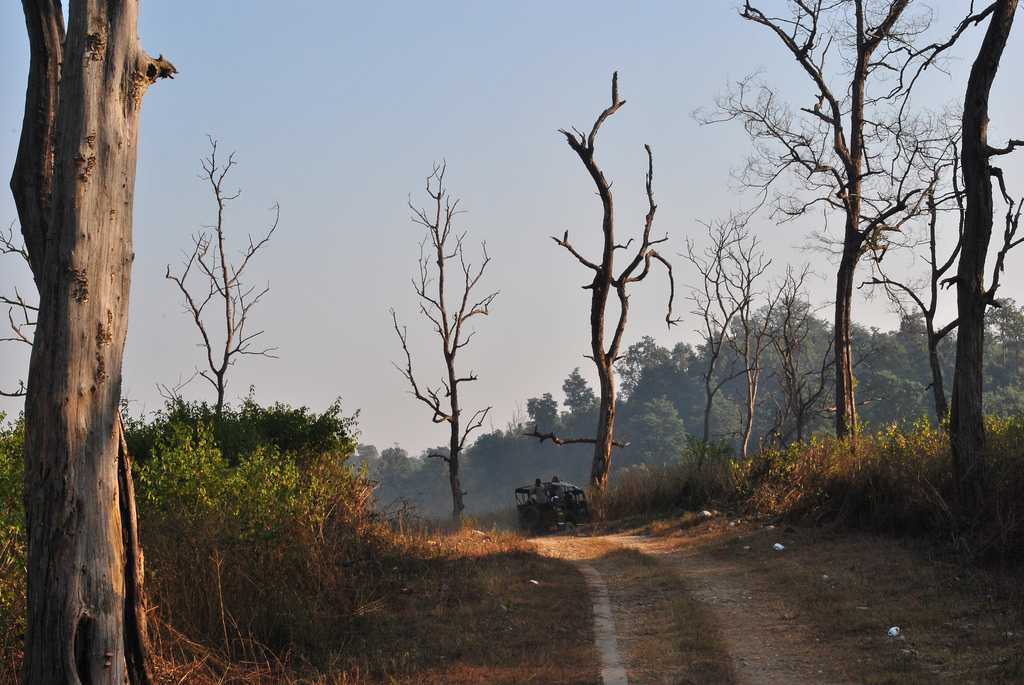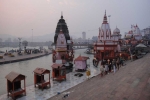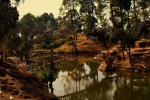Rajaji National Park Tourism
Hills Valleys, Rivers Lakes, National Parks,
Ideal Duration : 1-2 days
Best Time : Mid November to Mid June
Rajaji National Park Tourism
Encompassing the Shivalik mountain ranges, Rajaji National Park is abundantly rich in flora and fauna and proves a great holiday destination for nature lovers and wildlife enthusiasts alike.
Famous for its wildlife, especially for tigers and elephants, Rajaji National Park has recently received the status of a Tiger Reserve by the Government of India. Named in the honour or C. Rajagopalchari, this national park spreads over 3 districts of Uttarakhand includingDehradun,HaridwarandPauri Garhwal. This area is also enriched with valuable fossils which date back to as old as 10 million years old. The forest area is popular for Sal, Teak and other shrubs. You should explore the wilderness and rich diversity of Himalayan lives here with a Jeep Safari or Elephant Safari organised by the Forest Department, the 34 km jungle track is a major attraction here. You can spot Asian Elephants, Tiger and King Cobra, Panther, Bear, Chital, Sambar, Wild Boar, Kakar, Python, Monitor Lizard, Wild Cats.
You can also spot many birds including many species of migratory birds, especially after monsoons.
Download Rajaji National Park PDF Guide >
What's Great?
Scenic Beauty. Various species of flora and fauna. Safari rides are a must.
What's not so Great?
Difficult to reach.
For Whom
A visit here is perfect for wildlife photographers and people who are fascinated by wilderness.
Chilla, Motichur and Rajaji
A thriving wildlife ecosystem, Rajaji National Park is located beneath the Shivalik range in Uttarakhand. It?s a unique combination of not two, but three sanctuaries; namely Chilla, Motichur, and Rajaji. After a name change in 2015, the national park is now known as Rajaji Tiger Reserve.
Huddling up against the Eastern bank of Ganga, Chilla Sanctuary lies only 10 Kms away from the pilgrim town of Haridwar. So, a religious trip with family can easily be extended into an adventurous excursion into the wilderness.
60 Kms from Dehradun lies Motichur Wildlife Sanctuary, also known as Kansro. It?s best known for its Leopard sightings. Rajaji sanctuary is the oldest of them all. Asian Elephants are the centre of the spotlight here. The river Ganga drifts about, cutting through the forest.
Etymology
The tiger reserve earns its name from Shri C. Rajgopalachari, a popular leader, first and last Governor General of independent India, and a revered statesman. He was famous among the masses as Rajaji. It was his wish to turn the vast stretch of wilderness into a sanctuary as he was awed with its diverse flora and fauna. That?s how Rajaji Sanctuary came into being and later got its name to the unified Rajaji National Park.
History
Until 1983, the 820 km long span of the forest was scattered into three different wildlife reserves, each with particular flora and fauna of its own.The vast expanse of land traverses Haridwar, Dehradun, and Pauri Garhwal districts in Uttarakhand.
The park was established when C. Rajgopalachari (Rajaji), who was on a hunting trip in the wild, changed his mind and expressed his wish to turn it into a wildlife reserve instead.
The oldest of them all, Rajaji sanctuary came into being in 1948. Motichur was established in 1964 and Chilla in 1977.
The reserve boasts of an enriched fossil trail which goes back in ancient history. The Shivalik trail is believed to be at least 10 million years old.
Flora
Rich flora adorns the national park with a myriad shades and hues of Green. It?s home to the Shivalik ecosystem. Furnished with dense foliage of Sal trees and Bamboo Stalks, the Rajaji forest range is comprised of tropical and subtropical vegetation.
Both Riverine and Deciduous Broadleaf trees embellish the forestland. Flowering trees and shrubs like Amaltas, Kydia, Kachnar, Lantana, Sandan, Acacia, and Chilla augment the scenic beauty, making sure that the forest is always rife with a splash of colour. On the other hand, Shorea, Bel, Ber, Pipal, Ficus, Adina, and Chamaror add to the lush green cover.
Syzgium is a sight to behold when ripe with vividly coloured fruits.
Entry Fee for Rajaji National Park
For Indian Nationals: INR 750 per personFor Foreign Nationals: INR 1500 per personFor Jeep Safari: INR 1500 per Safari (INR 150 per person)
Safari Timings
The usual timings are 06:00 AM to 11:00 AM for morning sessions, 11:30 AM to 1 PM for birdwatching sessions inside the forest, and 2:30 pm to 5:30 pm for afternoon sessions. Depending on the season, the timings may undergo a slight change, which is notified in advance by the authorities in forest department.
Wildlife in Rajaji National Park
Rajaji National Park is predominantly formed from dense green jungles, and this environment forms a habitat for a number of animals. An amalgamation of three different forests with distinctive life forms, Rajaji national park houses an enormous variety of land and fauna.The park is at the northwestern limit of distribution for both elephants and tigers in India. Other wild animals found in the park include the Asian elephant, Bengal tiger, Langur, Leopard, Jungle cat, Striped hyena, Sambhar, Bear, Barking Deer, Goral, Indian hare, Monitor Lizard, Sloth bear, Indian Porcupine, and Rhesus Macaque.Due to the presence of a large number of birds, birdwatching is one of the popular attractions here. Scimitars, Babblers, Starlings, Hawk-Owls, Cuckoos, Pheasants, Hornbills, Kingfishers, Pea Fowls, Cormorants, Lapwings, and Partridges are only a few of the 315 bird species which call it home.Numerous types of butterflies are a permanent fixture amongst the plants and shrubs and migratory birds make it their home during winter months.Trout and Masheer fish populate the waters of Ganga cutting through the forest.
Restaurants and Local Food in Rajaji National Park
The National park does not have many options for food and hence you might want to bring some from home or make personal arrangements. You can, however, find eating joints in the nearby Dehradun.
Ask a question from people who travelled to Rajaji National Park recently
Be the first to add a question
Submit Question
Mid Nov-Mid Junis the best time to visit Rajaji National Park
The best time to visit Rajaji National Park is from 15th November to 15th June as the park is closed in the other months. April to June are a bit warm, however, this is a better period to spot animals as they come out more often to drink water.
Weather in Rajaji National Park
Loading...
Rajaji National Park in Summer (March - June)
The overall climate is quite moderate during this time. The temperature ranges between 12 to 38 degrees Celsius.
Rajaji National Park in Monsoon (July - September)
During the month of Monsoon, Dehradun receives mild to medium amount of rainfall. The city becomes even more beautiful during these months.
Rajaji National Park in Winter (November - February)
During the winter season, the temperature ranges between 17 to 22 degrees Celsius.
Monthly Weather in Rajaji National Park
Month
Avg. Minimum (°C)
Avg. Maximum (°C)
January
8
20
February
11
25
March
14
30
April
21
38
May
24
39
June
25
39
July
25
34
August
25
34
September
24
35
October
19
34
November
12
28
December
9
23
Events in Rajaji National Park
Wildlife spotting at Rajaji-National-Park
15th November-15th June
Having more than 400 species of birds, the beautiful locale and rich bio diversity serve as major attractions for Rajaji National Park. This park is home to the Asiatic Elephant as well as predators like Tigers and Leopards. The park is closed during monsoon, so you can only visit it between 15th November and 15th June.
Comments on Rajaji National Park
Post Your Comment


 Rishikesh
Rishikesh Mussoorie
Mussoorie Haridwar
Haridwar Dehradun
Dehradun Lansdowne
Lansdowne Shimla
Shimla